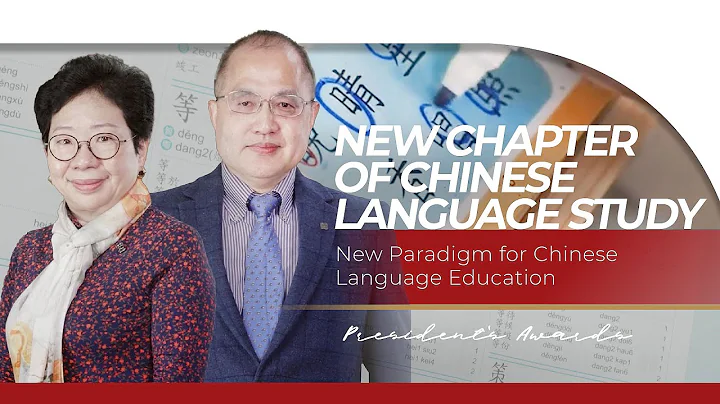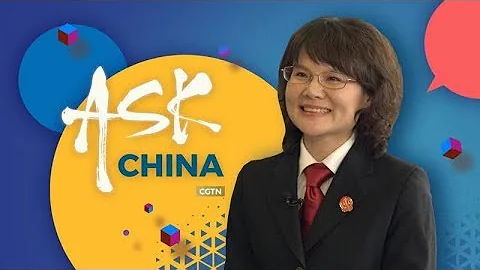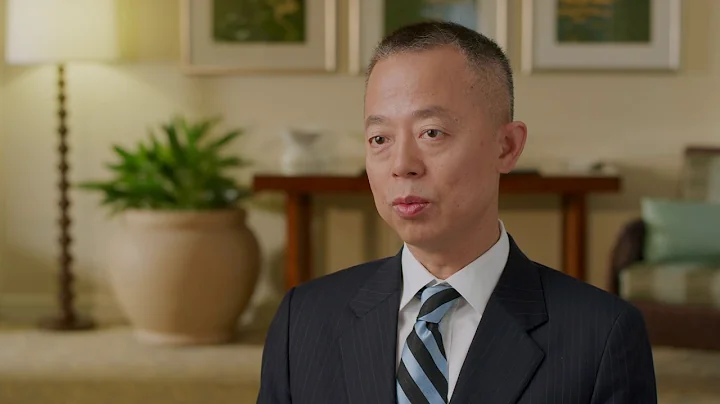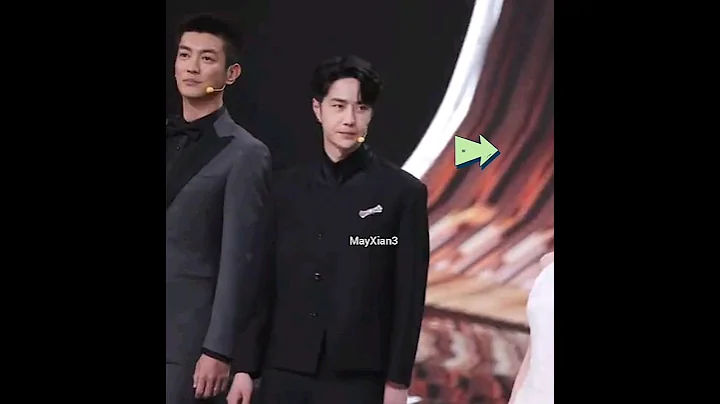Peninsula Reporter Wang Hongzhi Correspondent He Wenjie Lu Jiao
html On the morning of April 25, the Qingdao Intermediate People’s Court held a press conference to report on the Qingdao Court’s intellectual property judicial protection work in 2018, and released the top ten typical cases of the year and the Chinese and English bilingual "Qingdao Court" "The Status of Judicial Protection of Intellectual Property Rights (2016-2018)" White Paper, which is the first white paper on judicial protection of intellectual property rights in Chinese and English issued by courts in Shandong Province. It is understood that from 2016 to 2018, the city's courts heard a total of 5,975 intellectual property cases of various types, a year-on-year increase of 74.3% from the previous three years.
The white paper details the hearing of civil, criminal, administrative and foreign-related intellectual property cases in Qingdao courts over the past three years. By analyzing and sorting out the intellectual property cases heard in recent years, the Qingdao Intermediate People's Court believes that there are mainly the following problems in the protection, application and management of intellectual property: patent applications focus on "quantity" but not on "quality", resulting in increased litigation risks; trademarks Infringement has become more covert, and rights protection has become more difficult; the "free lunch" in the field of information network communication has ended, and a little carelessness will constitute infringement; the loss of business secrets and the transfer of patent ownership due to employees changing jobs are common; various issues in the network environment New types of competitive behavior need to be regulated urgently; small commodity operators have low awareness of intellectual property protection, and are particularly lacking in the ability to prevent litigation risks; the fixation and use of electronic evidence are still controversial.
It is understood that from 2016 to 2018, the city's courts heard a total of 5,975 intellectual property cases of various types, an increase of 74.3% compared with the previous three years, including 5,882 civil intellectual property cases (accounting for 98.4%), 80 criminal cases, and administrative cases. With 13 cases, the overall effectiveness of judicial protection of intellectual property rights continues to improve. In 2018 alone, Qingdao's two-level courts accepted a total of 2,528 intellectual property cases of various types, of which the Qingdao Intermediate People's Court accepted 1,660 cases and concluded 1,472 cases, a year-on-year increase of 16.2% and 13% respectively. Since the establishment of Qingdao Intellectual Property Court, it has accepted a total of 716 cross-domain technology cases and concluded 646 cases.


Qingdao is one of the first batch of intellectual property demonstration cities in the country and the founding city of the national strong intellectual property city. The number of intellectual property cases tried has been at a high level in the past three years, with the most obvious increase in copyright and trademark civil cases. Various new types of intellectual property cases continue to emerge, and the complexity of the cases continues to increase. The Qingdao Intellectual Property Court has successively accepted a large number of new types, difficult and complex cases such as the province's first unfair competition dispute on blocking website advertising, the first gene patent dispute, etc. The increasing difficulty of case trials has posed new challenges and higher requirements for intellectual property trials. Patents and other technical cases have grown significantly. From the establishment of the Qingdao Intellectual Property Court on September 30, 2017 to the end of 2018, a total of 602 technical intellectual property civil cases such as patents, technical secrets, computer software, etc. were heard in 15 months, a year-on-year increase of 447.3%. The advantages of centralized trial of technical cases have gradually become apparent. The phenomenon of commercial rights protection is prominent, the proportion of foreign-related and Hong Kong-related cases continues to increase, and the subject amount of the case and the amount of compensation awarded by the court are increasing year by year.
In 2018, the Qingdao Court based on its judicial function, effectively played the leading role of the judiciary in the protection of intellectual property rights, and tried a number of typical cases with great impact, including the protection of the Chinese time-honored brands "Zhenzhen" Photography, "Zhonghua" pencils, and "Yide" "ge" ink cases, cases on equal protection of the legitimate rights and interests of foreign intellectual property holders such as "CK" and "BUBERRY", as well as intellectual property criminal and administrative cases that reflect the advantages of the "three-in-one" trial of intellectual property. The types of cases heard involve patent rights, trademark rights, copyrights, unfair competition and other fields. The quality and efficiency of cases have been continuously improved. One case was selected into the first "100 Excellent Trials" of the national courts, and 5 cases were selected into the top ten typical intellectual property cases in Shandong Province. Recently, the Qingdao Intellectual Property Court established Shandong's first cross-domain intellectual property circuit tribunal in Weihai and sounded the "first hammer" to hear intellectual property cases in other places. The Qingdao Court's intellectual property judicial protection work is progressing in an orderly and stable manner.
In the next step, Qingdao Court will be guided by Xi Jinping Thought on Socialism with Chinese Characteristics for a New Era, give full play to the "window" demonstration role of Qingdao Intellectual Property Court, and create "Qingdao Experience" in intellectual property trials.Carry out special research on marine and geographical indication intellectual property rights to create a "Qingdao model" for marine intellectual property protection. Give full play to the advantages of mechanisms such as cross-regional collaboration, itinerant trials, and technical investigators to facilitate litigation by parties, continuously improve the intellectual property protection mechanism, stimulate the innovation vitality of enterprises, and create a first-class business environment that is market-oriented, rule-of-law, and international.
Some typical cases:
1. Are you good at patenting technology developed by others? no!
The plaintiff, Qingdao Tianren Micro-Nano Technology Co., Ltd., is a private enterprise that produces micro-nano processing equipment. Its legal representative is a visiting researcher at the State Key Laboratory of Infrared Physics and a " Taishan Industry Leading Talent" of the Shandong Provincial People's Government. The defendant Wang once worked as a technician at the plaintiff's office. After leaving his job, he and his wife Zhang established Qingdao Deweiguangna Technology Co., Ltd. has applied for three invention patents: "a precision alignment nanoimprinting equipment", "nanoimprinting equipment", and "a negative pressure nanoimprinting equipment".
The plaintiff believed that the defendant applied for an invention patent for the plaintiff's research and development technology without consent, which infringed upon its patent application rights, and requested confirmation that the above-mentioned patent application rights belong to the plaintiff. After trial, the court held that the plaintiff submitted preliminary evidence of its research and development of the technical solution involved in the case, but the defendant failed to submit effective evidence to prove that it had research and development capabilities and had conducted research and development of the patent application involved. As the defendant Wang has access to and participated in the research and development of the plaintiff's related products, the right to apply for the invention patent involved in the case should belong to the plaintiff. Therefore, it was ruled that the right to apply for the three invention patents belongs to the plaintiff.
2. Recruitment information misled the public, and the unfair competition court awarded compensation.
"Zhenzhen" is a legally registered word trademark of the plaintiff Qingdao Tianzhen Photography Co., Ltd., and has been recognized as a "Chinese Time-honored Brand" and "Shandong Province Famous Trademark". The defendant, Tong Yan Zhenzhen Children’s Photography Flagship Store in Shinan District, published recruitment information on “Ganji.com”, “58.com” and other websites, which were marked as “a children’s photography store affiliated with a century-old Qingdao store that records children’s memories of their growth”, “Qingdao century-old children’s photography store” The store "Zhenzhen Children's Photography" has been upgraded and renamed "Tong Yan Zhenzhen Children's Photography...". The plaintiff believed that the defendant's behavior constituted unfair competition, and requested the court to order the defendant to stop the infringement, compensate for the losses, apologize and eliminate the impact.
After trial, the court held that the plaintiff and defendant were both photography service companies, and the statements made by the defendant in its recruitment information would mislead the relevant public into confusing its photography services with the plaintiff’s well-known services, causing the relevant public to mistakenly believe that they were related to the plaintiff. The plaintiff's business reputation had a certain adverse impact, constituting unfair competition. The defendant was ordered to stop its unfair competition behavior against the plaintiff, that is, it must not use slogans that describe any relationship with the plaintiff in any advertising; compensate for economic losses and This city publishes impact elimination statements in publicly distributed newspapers and periodicals. The defendant was dissatisfied and appealed, and the second instance upheld the original verdict.
3. Indiscriminate use of the image of "Calabash Brothers", the automobile sales company defendant
"Calabash Brothers" (also known as Calabash Brothers) is a 13-episode series of paper-cut cartoons originally produced by the plaintiff Shanghai Animation Film Studio Co., Ltd. in 1986. After the broadcast of "Calabash Brothers", Calabash Brothers' animation image was deeply loved by the audience because of its unique character modeling and character characteristics. The plaintiff created and launched the sequel to "Calabash Brothers" in 1991 - " Calabash Little King Kong ". For more than 30 years, the plaintiff Shanghai Fine Arts Film Studio Co., Ltd. has comprehensively disseminated the image of Calabash dolls through TV broadcasts, cinema screenings, VCD recordings, etc., making Calabash dolls a cute character with spiritual qualities such as wit, bravery, justice, and cooperation. The representative of Chinese boys enjoys a high reputation among the public.
The defendant Qingdao Ruihe Automobile Sales and Service Co., Ltd. published on the WeChat public account "Calabash Baby tells you that you can see, break through, and resist, that's how strong it is!" "The image of Calabash Baby is used in the article. The plaintiff believed that the defendant's behavior violated the plaintiff's legitimate rights and interests, and requested the court to order the defendant to stop the infringement, compensate for losses, publicly apologize, and eliminate the impact.During the trial of this case, the plaintiff and defendant reached a settlement under the auspices of the court.
4. Infringed on the business secrets of the original company after leaving the company? compensation!
The plaintiff, Beijing Sanyiyiyi Ultra-low Temperature Technology Co., Ltd., was established in 2008 and engages in the import and export business of machinery and equipment. The defendant Fan started working at the plaintiff's office in 2008 and was mainly engaged in business work. During his employment, he signed a "Labor Contract" and a "Confidentiality Agreement", stipulating confidentiality obligations during and after resignation. After Fan resigned, he established the defendant Qingdao Shengyi Ultra-low Temperature Technology Co., Ltd. (hereinafter referred to as Qingdao Shengyi) in December 2015 and served as the legal representative. In 2016, the plaintiff discovered that the defendant Qingdao Shengyi sold the same product to the plaintiff's customers, and the prices were lower than the plaintiff's, which led to the customer asking the plaintiff to reduce the price.
The plaintiff believed that Air Products Co., Ltd. and other 35 customers were obtained by investing huge manpower, material and financial resources, and constituted trade secrets. The defendant used the company's trade secrets he mastered during his employment to establish his own company and operate the same business as the plaintiff. , infringed upon the plaintiff’s trade secrets, constituted unfair competition, and requested the court to order the two defendants to cease infringement and compensate for economic losses of 800,000 yuan. After trial, the court held that the defendants Fan and Qingdao Shengyi had infringed upon the business secrets of the plaintiff's two customers, and ordered the two defendants to stop using the plaintiff's two customer lists within two years from the effective date of the judgment, and to compensate the plaintiff for economic losses of 300,000 yuan. The defendant Qingdao Shengyi was dissatisfied and appealed, and the second instance upheld the original verdict.
5. Counterfeiting "Archaeopteryx" to make clothes, the parties involved were sentenced and fined
Summary of the case: The defendant Zhao organized the production and production of more than 4,000 clothes with the registered trademark "Archaeopteryx" in a factory in Jiaozhou City Licha Town without permission. The file was later seized by the public security organs. After identification, the seized clothes with counterfeit "Archa'teryx" brand registered trademark were worth a total of RMB 598,960. After trial, the court held that Zhao used someone else's registered trademark on the same kind of goods without the permission of the registered trademark owner. The circumstances were particularly serious and constituted the crime of counterfeiting a registered trademark. He was sentenced to three years in prison and fined. Two hundred thousand yuan. Zhao was dissatisfied and appealed, and the second instance upheld the original verdict.
This case is a typical case in which defendants of intellectual property crimes are sentenced to real sentences. It not only imposes heavy penalties on the defendants who counterfeit registered trademarks from the economic level, but also severely punishes them from the criminal level, giving full play to the punishment and punishment of intellectual property criminal trials. The deterrent effect has effectively promoted the unification of judgment standards for criminal crimes and civil infringements, and fully highlighted the advantages of the "three-in-one" trial of intellectual property rights.




















![[Engsub] Yibo and Liying performed the song "Snowman" together on stage ❤️ Their voices are so sweet - DayDayNews](https://i.ytimg.com/vi/ckKZusv-NKw/hq720.jpg?sqp=-oaymwEcCNAFEJQDSFXyq4qpAw4IARUAAIhCGAFwAcABBg==&rs=AOn4CLDAm4-310r_-2xRwKjBP6i5WV0OmA)
